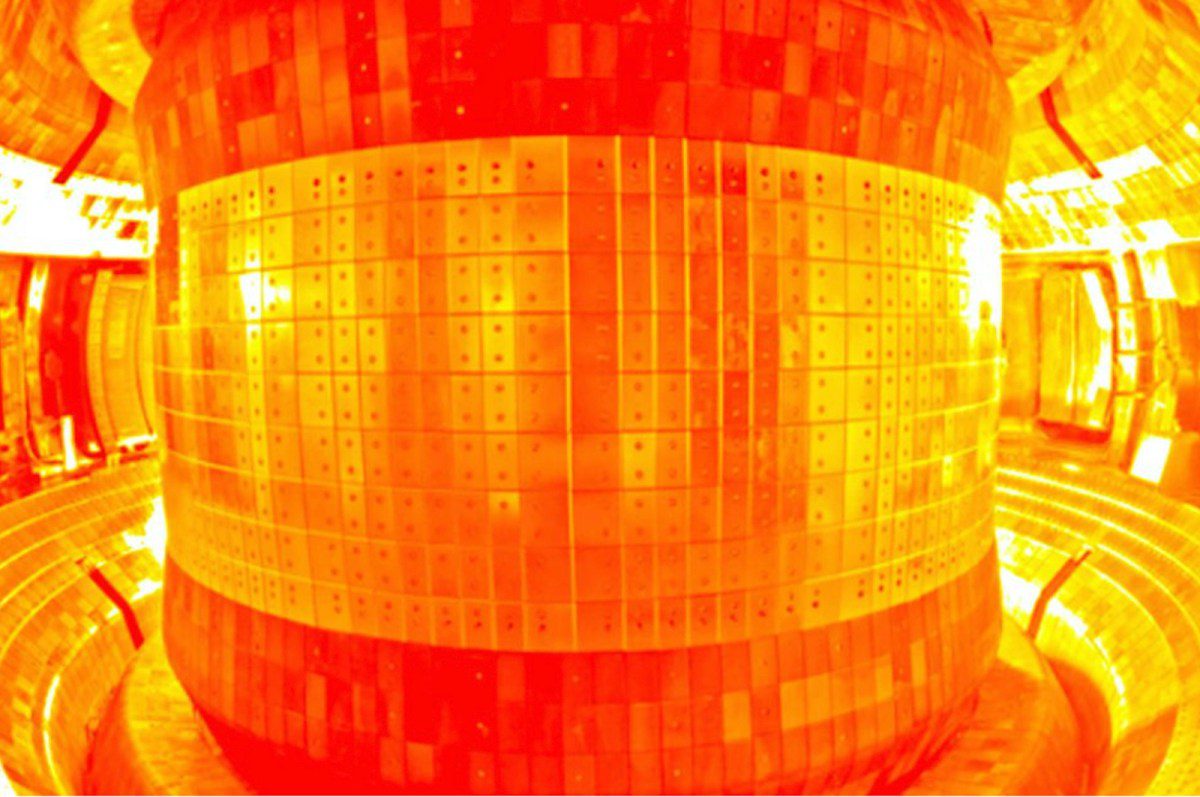Global Courant 2023-05-12 09:56:09
This is the second part in a three part series. Read part one here.
Experimental Advanced Superconducting Tokamak (EAST, referred to as HT-7U in China’s fusion program) is located at the Institute of Plasma Physics in Hefei, the capital of Anhui province.
EAST is the first tokamak device to use superconducting coils exclusively. (The French Tore Supra, an analogous device in some ways, uses superconducting coils only for the toroidal magnets, but not for the poloidal magnets).
EAST uses four heating systems to achieve and maintain plasma temperatures of 50-100 million degrees C or more: a neutral particle beam and radio frequency waves at three different resonance frequencies of the plasma. About 80 advanced diagnostic systems have been developed and implemented in EAST, enabling accurate observation of plasma behavior.
The ability to control the plasma is enhanced by the first use of advanced electronic power systems that can modulate the field strength of the poloidal coils in real time. EAST has been operating for almost 20 years without any significant problems.
Although it routinely operates with plasma temperatures in the same range as future power-producing reactors, the main goal of EAST is not to produce large numbers of fusion reactions, but rather to create stable plasma regimes with long confinement times to study their physics and a variety of technologies that are crucial for the realization of energy-producing tokamaks in the future.
In this context, many aspects of the EAST design and research program are focused on the needs of the ITER project. To better understand the significance of the recent results, it is worth briefly touching on some technical points.
Confinement and instability
Current efforts to improve plasma confinement focus on so-called “transfer barriers”. This is a self-organizing phenomenon in which the plasma itself adopts a dynamic structure that prevents the escape of plasma particles – electrons and ions.
This effect is especially pronounced in the “high-confinement mode (H-mode)” mentioned above. Researchers speak of an “edge transition barrier” manifested in the formation of a relatively sharp “edge” or outer layer that separates the core of the plasma from the surrounding vacuum, as well as an “internal transport barrier” acting in the adjacent plasma regions.
A technician works hard on China’s EAST reactor. Image: Xinhua
Unfortunately, as so often happens, this favorable situation is threatened by confounding instabilities at the plasma boundary, known as “edge-localized modes” (ELM), which degrade the quality of the plasma confinement and potentially damage the plasma. cause. reactor components known as divertors (see below).
The record 1,056 seconds of confinement achieved by EAST in 2021 was largely made possible by an almost complete absence of ELMs in the newly discovered plasma state that the Chinese researchers call the “Super I mode”.
ELMs were also greatly suppressed during the April 12, 2023 experiment, which set the world record for confinement time in the standard “high confinement mode”.
This experiment, repeated the next day, was characterized by an exceptionally “quiet”, almost stable plasma and several other favorable properties.
I have yet to see a comparison between “H” and “Super I” in terms of their relative suitability for achieving fusion. It can be expected that further plasma modes will be discovered.
diverters
Both results stem from a second major focus of EAST, in addition to achieving long duration of stable plasma confinement. This is the design and operation of so-called divertors, which are the main components of any tokamak fusion reactor.
To put it as simply as possible, divertors were invented to solve the following problem:
Fusion reactions generate heavier nuclei from lighter ones. The deuterium (D)-tritium (T) reaction, envisioned for first-generation power plants, produces helium-3 nuclei and high-energy neutrons.
The neutrons, which are electrically neutral, are unaffected by the magnetic fields in the reactor; they fly off, pass through the reactor wall and are absorbed by the surrounding material, the so-called blanket, creating heat. This heat makes up about 80% of the plant’s thermal output.
Meanwhile, the positively charged helium 3 nuclei remain in the plasma. If they accumulated, they would “dilute” the fuel, slowing the rate of fusion reactions and eventually extinguishing them.
In addition, the plasma must be cleaned of impurities in the form of heavier nuclei, mainly produced by the so-called “sputtering” of the reactor wall by the impact of energetic neutrons and ions. The presence of these heavier nuclei, among other things, greatly increases the energy losses of the plasma due to electromagnetic radiation.
The task of removing helium-3 “ashes” and heavier nuclei from the plasma poses a paradox: How can these be removed without physical contact with the hot plasma? The most effective solution found is to configure the magnetic field lines in the reactor to create a second, smaller confinement next to the first region (see diagram).
Moving along magnetic field lines, a certain portion of the plasma particles, located at the edge of the nuclear plasma, escapes to this second region and enters a structure called the divertor. There, the fast-moving particles collide with a “target” material, release their energy in the form of heat, and recombine to form atoms.
These are then pumped out to a system that separates helium and impurities, leaving a purified deuterium-tritium mixture. Finally, the D+T mixture, optionally with fresh D and T added, can be recycled back into the plasma core.
A major challenge in divertor design lies in the intense heat generated by the impact of “hot” plasma particles on the target.
In future fusion reactors, the divertors must withstand heat loads many times that of the heat shielding of spacecraft continuously entering Earth’s atmosphere. The frequency with which divertor materials need to be replaced is an important issue for the viability of fusion power plants.
In a tokamak reactor operating on D+T fuel, about 15% of the total thermal power produced by fusion reactions is extracted by the divertors. The rest consists mainly of electromagnetic radiation.
EAST is designed to develop and test advanced divertor designs, particularly including tungsten diverstors of the type intended for use in the ITER reactor. Achieving sustained plasmas is essential to that task.
In addition to disrupting the containment, the ELM instability leads to short, intense bursts of energy, which, when they arrive at the divertor from the edge of the plasma, can severely shorten its lifetime. The ability to suppress the ELMs, demonstrated by EAST, raises the prospects for a viable power plant along the lines of ITER.
Similar:
Loading…




